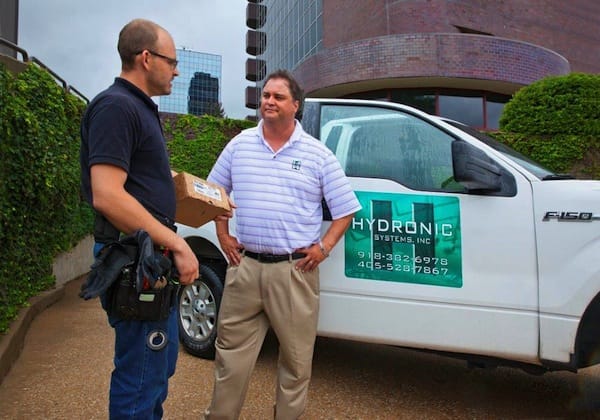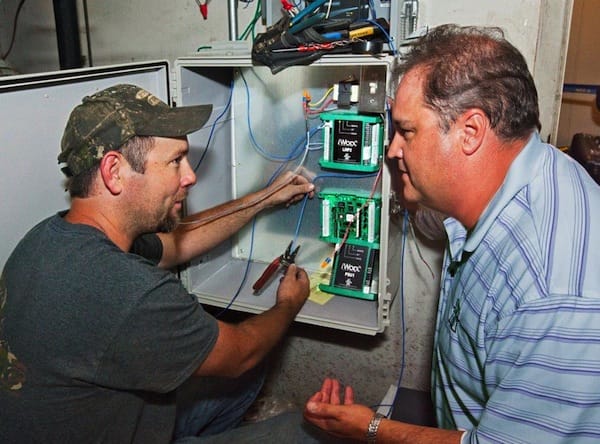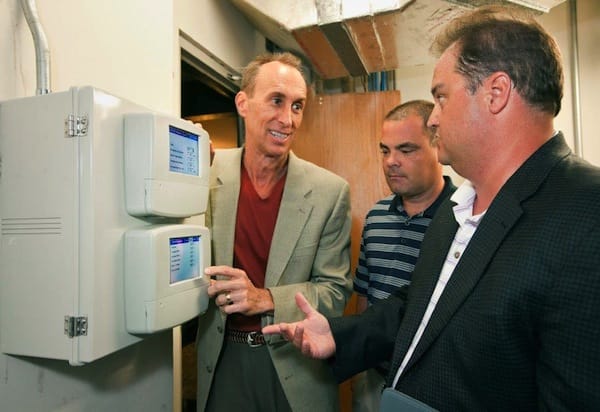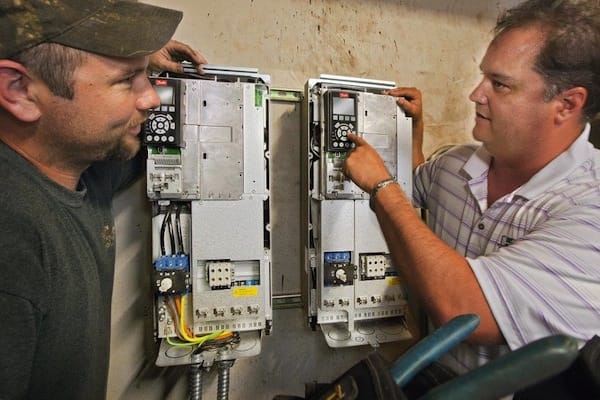 The new owners of Remington Tower office building in Tulsa, OK, looked into an energy retrofit immediately after its purchase in July of last year. The 20-story, 96,000 square-foot building was constructed in 1983, and while its water-source heat pump system remains in good condition, the original controls were obsolete.
The new owners of Remington Tower office building in Tulsa, OK, looked into an energy retrofit immediately after its purchase in July of last year. The 20-story, 96,000 square-foot building was constructed in 1983, and while its water-source heat pump system remains in good condition, the original controls were obsolete.
“Our main concern was that the building was being conditioned as if occupied around the clock, and that’s far from efficient,” said Mark Roberts, part owner of the building. Roberts developed and co-owned Muskogee Community Hospital, the world’s first for-profit LEED Gold hospital. It goes without saying that he’s a proponent of sustainable buildings, and takes building energy efficiency pretty seriously.
“Of the 168 hours in a week, Remington Tower is occupied, at most, 60 hours,” he continued. “We wanted automated controls that would turn back the heating and cooling systems for the other two-thirds of the time.” The building serves as office space for 24 tenants.
With an energy analysis from engineering firm Crafton Tull, and product expertise from manufacturer’s representative Hydronic Systems Inc., the planned-for controls retrofit yielded better results than Roberts had hoped for.

Brian Boozer (r), VP & sales engineer, Hydronic Systems Inc., and a technician, discuss the retrofit.
Duane Harman, PE, completed an extensive energy study at Remington Tower. Harman is a senior project manager at Crafton Tull’s mechanical engineering department in Tulsa. The 250-person firm, headquartered in Roger, AR, offers building design services including architecture, interior design, as well as mechanical, electrical, structural, and civil engineering.
Controls make the difference
After looking at all facets of Remington Tower’s mechanical systems and building envelope, Harman recommended a control system retrofit and the addition of variable frequency drives to the building’s three largest motors; two large pumps and a chiller fan. The plan would significantly reduce the building’s carbon footprint and offer a strong ROI.
Harman also suggested that Brian Boozer, VP and sales engineer at Hydronic Systems Inc. be brought on for the retrofit. Hydronic Systems is a manufacturer’s sales rep company based in Oklahoma City and Tulsa, with an additional office in Arkansas. The firm is unique in that they now provide sales, installation and service of HVAC equipment and controls. Although they’ve been serving the HVAC industry for more than 15 years, Hydronic Systems recently expanded their services to include controls to better meet the needs of their clients.

A Hydronic Systems technician installs an iWorx PSU1 module, which creates a 0-10 signal to control the operation of the pump VFDs.
“We now carry Taco’s iWorX control package and knew that this technology would provide the solutions needed at Remington Tower,” said Boozer. “This web-based building management, monitoring and control system is not only on our line card, but we install it as well. After evaluating the project we saw that the system’s modularity and ease of installation fit the application perfectly.”
126 water-sourced heat pumps
The firm’s new expertise and manpower paid off at Remington Tower. The key challenge for the three-man install crew was minimizing disturbance to the occupied office spaces. Drop ceilings helped make the work simpler; with installation of the controls and addition of three Danfoss VLT HVAC variable frequency drives, they were done in less than a month.
Each of the 126 Carrier heat pumps throughout the building is now individually controlled by an iWorX HPU2 module. Application-specific modules are also used for several fan coil units, the chiller, boilers, pumps, lighting, computer room alarms and outdoor temperature sensors. All modules then connect to a web-enabled, touch screen LCI – or Local Control Interface.

(L-R) Mark Roberts, part owner of Remington Tower, Duane Harman, PE, senior project manager at Crafton Tull’s mechanical engineering department and Brian Boozer, VP and sales engineer at Hydronic Systems Inc., change set points on the system’s LCI
“Once a controller is wired into the system, you just push a button, and it identifies itself on the network,” said Ric Turmel, division manager at Taco. “There’s no control sequence to write and no website to build. It’s plug-and-play, by design.” Turmel worked closely with Hydronic Systems to coordinate all facets of the job and achieve maximum efficiency for the building owner.
“What makes iWorX different from other systems is that you don’t need special tools, software or computers to do the installation or commissioning,” continued Turmel. “Once wired, programs are resident in the controller. By manipulating control parameters for the specific HVAC equipment from a single, central location through the LCI, engineering time is eliminated and installation costs drop significantly.”
While iWorX systems are often remotely monitored by engineers or installing contractors, Roberts prefers to monitor the building himself. Another benefit to Roberts is that there are no ongoing costs associated with the system. “With iWorX,” said Turmel, “first cost is last cost. The owner of the building owns the system, and software and hardware updates are free significantly reducing building ownership costs.”
“One of the things I really like about this system is that if there’s a problem in the building, I learn about it before the tenant does,” said Roberts. “If there’s an issue with a heat pump, I can likely have it taken care before occupants can feel the difference.”
Retrofit VFDs done right
Before Harman’s energy analysis began, the heating system was updated with two new boilers, but the original, constant-speed pumps were reused. As part of controls retrofit, Harman suggested adding VFDs to the two, 40-HP main circulating pumps, as well as the fan on the Marley cooling tower.
Roberts had considered VFDs as part of the boiler retrofit, but at the time, the bid to implement them – along with another control package – had come in at around $300,000. The high cost stemmed from the need to install control valves at each heat pump and pressure sensors in the hydronic mains in order for the drives to sense pressure changes across the system.
The idea of installing VFDs became a reality when Boozer suggested using the iWorX system to sense change in temperature across supply and return water to dictate pump or fan speed. Boozer avoided the cost and – just as importantly – the disturbance of the building that would’ve been required to install valves on unit.
“By using a 0-10 signal from the PSU1 iWorX module, we’re able to vary the speed of the drives to maintain a specific temperature change across the mains,” said Boozer. “We avoided the cost of installing 126 valves by using the sensory control module.”
Simple but impactful
The retrofit at Remington Tower lasted approximately one month, with the install crew on site only during regular business hours. The problem of manual t-stats remaining at occupied conditions overnight and through weekends is now a thing of the past, and power bills are reduced as a result of the VFD installations.
A simple payback completed by Harman showed complete recoup of investment in about six years, but that doesn’t account for the substantial utility rebates that the project qualified for.
Harman is registered with the local utility, Public Service Company of Oklahoma (PSO), as a local technical service provider for their Power Forward program. He was aware that both the energy analysis and the retrofit qualified for rebates. PSO refunded approximately 40 percent of the project cost, and half the cost of the analysis, bringing the actual payback time to just 3 years. Over the course of a year, the retrofit will cut the building’s operating costs by nearly 25%.





Join the conversation: